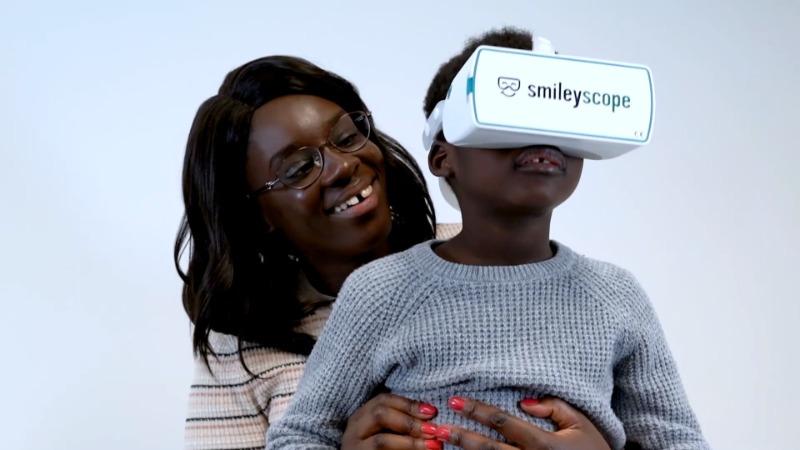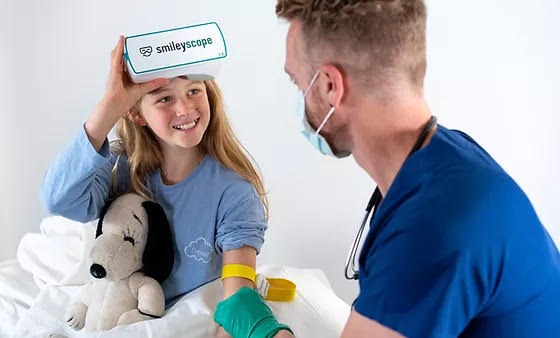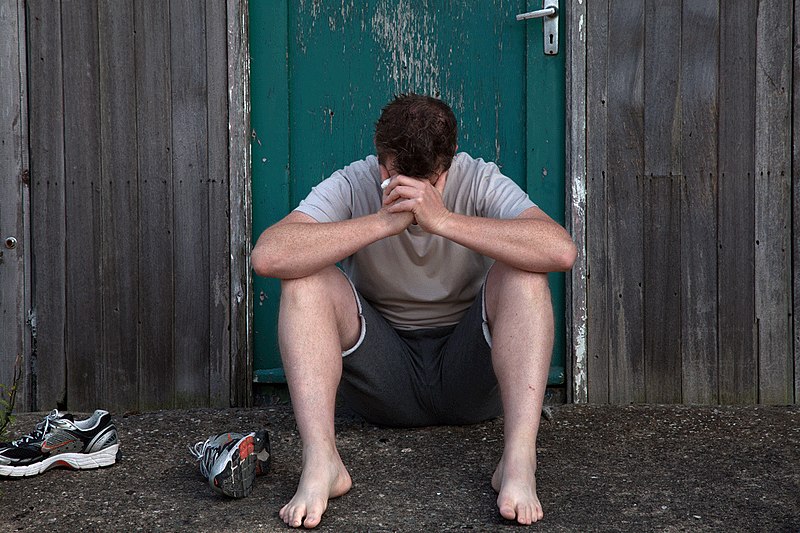How VR technology is changing the pediatric experience

Advances in virtual reality continue to transform many industries, including the medical sector. Virtual reality is changing the patient experience and making it easier for doctors to perform needle procedures with less pain and anxiety.
To get an overview of virtual reality and its influence on the industry, Innovation and technology today spoke with Evelyn Chan, Rhodes Scholar, pediatrician and CEO of Smileyscope. She led the world’s largest VR medical study and found a way to reduce pain from injection procedures by 60% and anxiety by 40% through the use of virtual reality medical devices. So far, it has partnered with more than 40 US hospitals to implement this technology.
Innovation and technology today: Can you share the story of what inspired you to combine your pediatric training with virtual reality technology to treat pain and anxiety during injection procedures?
Evelyn Chan: I became a pediatrician to make a positive difference in the lives of children. After injecting thousands of needles into children, I can tell you that the practice of medicine is often traumatic for children, families, and health care providers. In pediatric residency, we were taught to “listen through the screams” – but that doesn’t have to be the case.
I was frustrated by the lack of options to help children with their biggest health fear: needles. To address this problem, I led a group that conducted cutting-edge research into the use of virtual reality in medicine. First, we reviewed the scientific literature and found that VR showed promise as a therapeutic tool, but existing products had serious gaps in medical use.
So we launched Smileyscope and developed a medical-grade headset from scratch. We then created a patented VR program that synchronizes the virtual patient experience with the medical procedure – we call this “Procedural Choreography”. We’ve teamed up with talented producers to create a world-class animated underwater adventure where waves gently crash over the child’s arm while the nurse disinfects the injection site and friendly fish nibble on his arm playfully while the needle is inserted. It teaches patients positive coping skills, allowing both patient and clinician to have a better treatment experience.
Bad experiences with needles during childhood mean that up to 25% of adults avoid medical care involving needles. By intervening early, we can reduce needle phobia and improve long-term health care outcomes.

I&T today: Can you explain to us how this technology works and its impact on patients?
THIS: In early 2022, Smileyscope received patent approval for our core “procedural choreography” technology. Procedural choreography works by synchronizing common medical procedures with a VR scenario; it essentially replaces a negative real-world stimulus, like the jab of a needle, with a more positive virtual experience, like friendly fish nibbles.
We conducted the world’s largest randomized clinical trial that showed that by reframing these experiences, patients see a 60% reduction in pain and 40% reduction in anxiety compared to the current standard of care (Chan et al, The J Peds 2019). The study also demonstrated that Smileyscope halved the use of physical restraints (i.e. restraining a child) and reduced parental distress by 75%.
We have since expanded beyond needle procedures and now see Smileyscope being used by hospital clinicians for a wide range of medical procedures. They use Smileyscope for dressing changes, anesthesia induction, behavioral health, laceration repairs (stitches), and even cast application/removal. The sky really is the limit.
I&T today: Could you tell us the main conclusions and results of the world’s largest VR medical study that you conducted? What were the most surprising or striking results?
THIS: The study we conducted compared Smileyscope VR to the current standard of care (SOC). The current SOC included topical analgesics, a 2D distraction such as a tablet, and a comfort position, in which the parent holds the child firmly to soothe them during the procedure. We suspected that VR would reduce pain and anxiety, but we were surprised to see such a dramatic improvement over current standards of care. Patients reported on average 60% less pain and 40% less anxiety compared to standard care: that’s huge!
We were also pleasantly surprised to see a significant reduction in the use of restraints. Parents often dread injection procedures because if their child has to be held down, the experience is traumatic for them as well as their child. We were pleased to see that Smileyscope could cut the use of non-VR restraints in half.
I&T today: What future developments do you foresee in the field of medical virtual reality, and how do you envision Smileyscope’s role in shaping these developments?
THIS: Gaming and consumer-focused VR has been around for a long time, but procedural VR is in its infancy! Smileyscope started with needle procedures only a few years ago, and we continue to be inspired by how healthcare providers have adopted this technology. In response, we have significantly expanded our content library and now see Smileyscope used for over 200 distinct procedures across the hospital.
We see enormous potential for virtual reality as a non-pharmacological alternative to relieve pain and anxiety. For example, lately we have seen Smileyscope being used to reduce or eliminate the need for sedatives for minor procedures throughout the hospital.
I&T today: How do you see the evolution of virtual reality technology in the healthcare field in the years to come, and what role do you envision for Smileyscope in this evolution?
THIS: We are at the dawn of an exciting new era in medicine. In the coming years, we see that virtual reality will have a significant impact on how we treat patient pain and anxiety. The convergence of crucial factors paves the way for widespread adoption. These factors include the maturation of technology, accessibility, and meeting unmet needs.



Leave a Comment